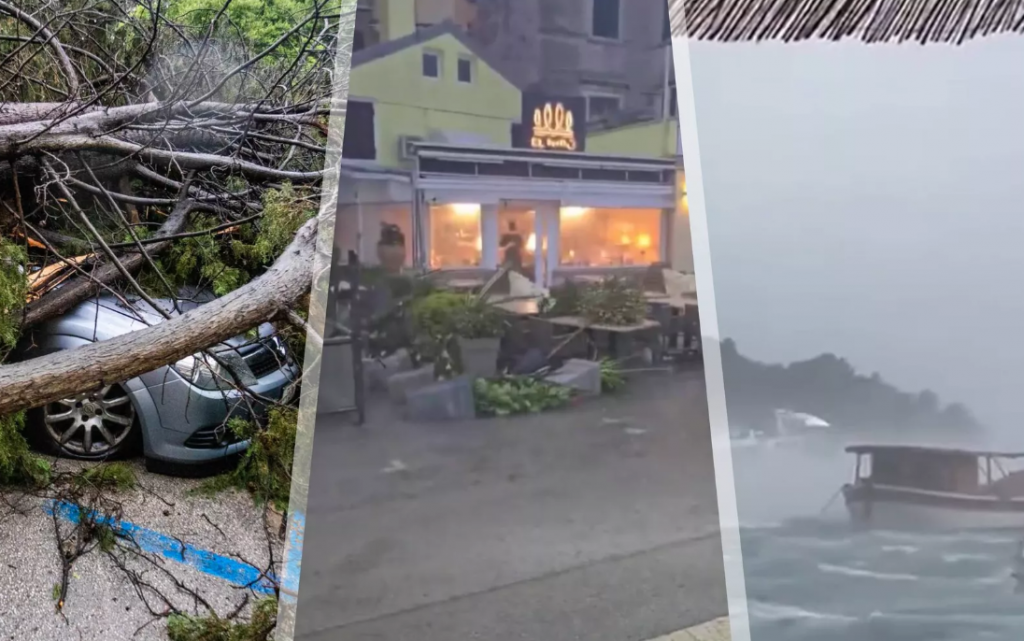
On Monday, June 16, 2025, a violent windstorm swept across the Istrian peninsula in Croatia, bringing gusts reaching speeds up to 150 km/h (approximately 41 m/s). The severe weather event caused widespread damage in several towns including Pula, Rovinj, Poreč, Vrsar, and Stoja, resulting in seven people injured and significant disruption.
Timeline and Locations
The storm hit the area between 17:00 and 17:30 UTC, with the strongest gusts reported around 17:10-17:25 UTC. The most affected locations include:
- Pula (44.87 N, 13.85 E) — Roads were rendered impassable due to uprooted trees and broken branches.
- Rovinj (multiple locations including Monsena, Porton Biondi, and town center) — Experienced heavy damage with roads closed, roofs and chimneys damaged, cars destroyed beyond repair, and large trees uprooted or snapped.
- Poreč (45.23 N, 13.59 E) — Similar impacts with blocked roads and fallen trees.
- Vrsar (Porto Sole) and Stoja (44.86 N, 13.81 E) — Notable damage to camping sites and significant tree damage reported.
Damage and Impacts
Eyewitness reports, video footage, and photographs confirm the storm’s destructive force:
- Large tree branches broken and numerous trees uprooted or snapped across affected areas.
- Roads became impassable or were temporarily closed due to debris.
- Damage to residential and commercial properties, including roofs and chimneys.
- Several vehicles were damaged beyond repair.
- Camping sites suffered extensive damage, affecting tourists and locals alike.
Injuries
The storm injured seven people, with six reported in Rovinj alone. The injuries were mostly caused by falling debris such as tree branches and roof tiles ripped off by the strong winds.
Meteorological Data
The highest wind gust recorded was 41 m/s (around 150 km/h) at the Sveti Ivan lighthouse near Picina. The event has been classified with an intensity rating of IF1 on the International Fujita Scale, indicating significant damage to trees (Damage Indicator: TRA, Degree of Damage: 3).
Official Reports and Sources
The severe wind event has been confirmed by multiple reliable sources including eyewitness accounts, photographs, video footage, and local newspapers. Key reports come from Telegram.hr, Jutarnji.hr, and 24sata.hr, which documented the storm’s chaos and damage in detail:
Emergency Response and Aftermath
Local authorities quickly mobilized to clear roads and provide assistance to those affected. Emergency services treated the injured and began assessing structural damages. Given the scale of destruction, recovery efforts are expected to continue for days.
Conclusion
This rare and intense windstorm has left a strong mark on the Istrian region of Croatia. With winds reaching up to 150 km/h, it caused serious damage to infrastructure and natural environments and injured several people. Residents are urged to stay alert during such severe weather and follow official safety guidance.




























